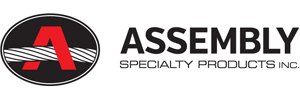OSHA Guide – Cranes and Derricks in Construction
MENU
- Introduction
- Employer Responsibilities
- Section 1400 – Scope
- Section 1401 – Definitions
- Section 1402 – Ground Conditions
- Sections 1403-1406 – Assembly and Disassembly
- Sections 1407-1411 – Power Lines
- Section 1412 – Inspections (with Section 1435(f)-Tower Crane Inspections) and Section 1436(p)-Derricks Inspections)
- Section 1413 – Wire Rope Inspection
- Section 1414 – Wire Rope – Selection and Installation Criteria
- Sections 1415 Safety Devices & 1416 Operational Aids
- Section 1417 – Operation
- Section 1418 – Authority to Stop Operation
- Section 1419-1422 – Signals
- Section 1423 – Fall Protection
- Section 1424 – Work Area Control
- Section 1425 – Keeping Clear of the Load
- Section 1426 – Free Fall and Controlled Load Lowering
- Section 1427 – Operator Qualification and Certification
- Section 1428 – Signal Person Qualifications
- Section 1429 – Qualifications of Maintenance & Repair Employees
- Section 1430 – Training
- Section 1431 – Hoisting Personnel
- Section 1432 – Multiple-Crane/Derrick Lifts
- Section 1433 – Design, Construction and Testing
- Section 1434 – Equipment Modifications
- Section 1435 – Tower Cranes
- Section 1436 – Derricks
- Section 1437 – Floating Cranes/Derricks and Land Cranes/Derricks on Barges
- Section 1438 – Overhead & Gantry Cranes
- Section 1439 – Dedicated Pile Drivers
- Section 1440 – Sideboom Cranes
- Section 1441 – Equipment with a Rated Hoisting/Lifting Capacity of 2,000 Pounds or Less
- Directory of States with Approved Occupational Safety and Health Programs
- Workers’ Rights
- OSHA Assistance, Services and Programs
- OSHA Regional Offices
- NIOSH Health Hazard Evaluation Program
Section 1431 – Hoisting Personnel
Hoisting Personnel is Generally Prohibited
Cranes and derricks may not be used to hoist employees except where the employer demonstrates that the erection, use, and dismantling of conventional means of reaching the work area, such as a personnel hoist, ladder, stairway, aerial lift, elevating work platform, or scaffold, would be more hazardous, or is not possible because of the project’s structural design or work site conditions.
This section contains stringent criteria to assure the safety of personnel who must be hoisted by a crane or derrick. These criteria are fundamentally the same as those in the prior standard.
Use of Personnel Platform
A personnel platform must be used when hoisting employees except when hoisting them:
- Into and out of drill shafts that are 8 feet in diameter or smaller
- In pile driving operations
- Solely for transfer to or from a marine work site in a marine-hoisted personnel transfer device
- In storage tank (steel or concrete), shaft, and chimney operations
Where these exceptions apply, the employee may be hoisted in either a personnel platform or a boatswain’s chair. See the standard for rules applicable to these special types of lifts.
Personnel Platform Criteria
The personnel platform must conform to the following:
- A qualified person familiar with structural design must design the personnel platform and attachment/suspension system used for hoisting personnel
- The system used to connect the personnel platform to the equipment must allow the platform to remain within 10 degrees of level, regardless of boom angle
- The suspension system must be designed to minimize tipping of the platform due to movement of employees occupying the platform
- The personnel platform itself (excluding the guardrail system and personal fall arrest system anchorages) must be able to support, without failure, its own weight and at least five times the maximum intended load
- All welding of the personnel platform and its components must be performed by a certified welder familiar with the weld grades, types and material specified in the platform design
- The personnel platform must be equipped with a guardrail system which meets OSHA criteria and must be enclosed at least from the toe-board to mid-rail with either solid construction material or expanded metal having openings no greater than ½ inch. Points to which personal fall arrest systems are attached must meet OSHA anchorage requirements
- A grab rail must be installed inside the entire perimeter of the personnel platform except for access gates/doors
- If installed, access gates/doors of all types (including swinging, sliding, folding, or other types) must:
- Not swing outward. However, if due to the size of the personnel platform, such as a 1-person platform, it is infeasible for the door to swing inward and allow safe entry for the platform occupant then the access gate/door may swing outward
- Be equipped with a device that prevents accidental opening
- Headroom must be sufficient to allow employees to stand upright in the platform
- In addition to the use of hard hats, employees must be protected by overhead protection on the personnel platform when employees are exposed to falling objects. The platform overhead protection must not obscure the view of the operator or platform occupants (such as wire mesh that has up to ½ inch openings) unless full protection is necessary
- All edges exposed to employee contact must be smooth enough to prevent injury
- The weight of the platform and its rated capacity must be conspicuously posted on the platform with a plate or other permanent marking
- The personnel platform must not be loaded in excess of its rated capacity
- Personnel platforms must be used only for employees, their tools, and the materials necessary to do their work
- Materials and tools must be secured to prevent displacement and evenly distributed within the platform
- The number of employees occupying the personnel platform must not exceed the maximum number the platform was designed to hold or the number required to perform the work, whichever is less
Hoisting Equipment
The hoisting equipment must meet the following criteria when hoisting personnel:
- The equipment must be uniformly level, within one percent of level grade, and located on footing that a qualified person has determined to be sufficiently firm and stable
- Equipment with outriggers or stabilizers must have them all extended and locked. The amount of extension must be the same for all outriggers and stabilizers and in accord with manufacturer procedures and load charts
- The total load (including the hook, load line and rigging) must not exceed 50 percent of the rated capacity for the radius and configuration of the equipment, except during proof testing
- When the occupied personnel platform is in a stationary working position, the load and boom hoist brakes, swing brakes, and operator actuated secondary braking and locking features (such as pawls or dogs) or automatic secondary brakes must be engaged
- The equipment must be equipped with the safety devices specified herein
- Attachments and rigging hardware must meet the criteria specified herein
Trial Lift and Inspection
A trial lift with the unoccupied personnel platform loaded at least to the anticipated lift weight must be made from ground level, or any other location where employees will enter the platform, to each location at which the platform is to be hoisted and positioned. Where there is more than one location to be reached from a single set-up position, either individual trial lifts for each location, or a single trial lift, in which the platform is moved sequentially to each location, must be performed; the method selected must be the same as the method that will be used to hoist the personnel. Immediately after the trial lift, a competent person must visually inspect the equipment, base support or ground, and personnel platform, to determine whether the trial lift has exposed any defect or problem or produced any adverse effect. Any condition found during the trial lift and subsequent inspection that fails to meet a requirement of this standard or otherwise creates a safety hazard must be corrected before hoisting personnel.
Proof Testing
Prior to hoisting employees on the personnel platform, and after any repair or modification, the platform and rigging must be proof tested to 125 percent of the platform’s rated capacity. The proof test may be done concurrently with the trial lift. Personnel hoisting must not be conducted until a competent person determines that the platform and rigging have successfully passed the proof test.
Work Practices
The following practices must be used:
- Hoisting of the personnel platform must be performed in a slow, controlled, cautious manner, with no sudden movements of the equipment or the platform
- Platform occupants must keep all parts of the body inside the platform during raising, lowering, and horizontal movement, and must not stand, sit on, or work from the top or intermediate rail or toe-board, or use any other means/device to raise their working height
- Before employees exit or enter a hoisted personnel platform that is not landed, the platform must be secured to the structure where the work is to be performed, unless the employer can demonstrate that securing the platform to the structure would create a greater hazard
- If the platform is tied to the structure, the operator must not move the platform until the operator receives confirmation that it is freely suspended
- Tag lines must be used when necessary to control the platform
- Where the platform is not equipped with controls, the equipment operator must remain at the equipment controls, on site, and in view of the equipment, at all times while the platform is occupied
- Where the platform is equipped with controls, all of the following must be met at all times while the platform is occupied:
- The occupant using the controls in the platform must be a qualified person with respect to their use, including the safe limitations of the equipment and hazards associated with its operation
- The equipment operator must be at a set of equipment controls that include boom and swing functions of the equipment, and must be on site and in view of the equipment
- The platform operating manual must be in the platform or on the equipment
- When wind speed (sustained or gusts) exceeds 20 mph at the personnel platform, or other potentially dangerous weather conditions are present, a qualified person must determine if, in light of the wind conditions, it is not safe to lift personnel. If it is not, the lifting operation must not begin (or, if already in progress, must be terminated)
- Employees being hoisted must remain in direct communication with the signal person (where used) or the operator
- Except over water, employees occupying the personnel platform must be provided and use a personal fall arrest system attached to a structural member within the personnel platform. (The fall arrest system must meet the requirements in 1926.502).When working over or near water, the requirements of 1926.106 apply.
- No lifts may be made on any other of the equipment’s load lines while personnel are being hoisted, except in pile driving operations.
- Hoisting of employees while the equipment (other than derricks) is traveling is prohibited except in certain circumstances. Derricks are prohibited from traveling while personnel are hoisted.
Pre-Lift Meeting
A pre-lift meeting must be held before the trial lift to review the applicable requirements of this section and the procedures that will be followed. The meeting must be attended by the equipment operator, signal person (if used for the lift), employees to be hoisted, and the person responsible for the task to be performed.
Hoisting Personnel Near Power Lines
Hoisting personnel within 20 feet of a power line that is up to 350 kV, and hoisting personnel within 50 feet of a power line that is over 350 kV, is prohibited (except for power transmission and distribution work).

